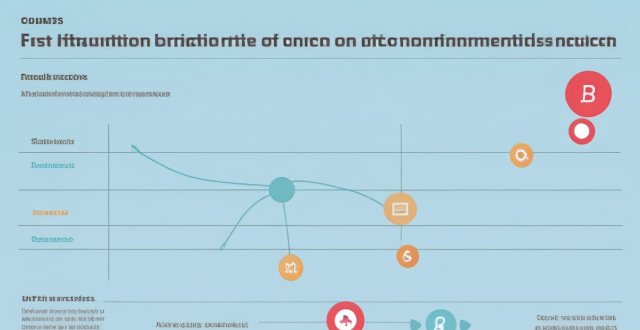Ses Climate

What is climate vulnerability ?
Climate vulnerability refers to the susceptibility of a system or population to harm from climate-related stresses and extremes. Key factors contributing to this include exposure, sensitivity, and adaptive capacity. Examples of vulnerable systems include low-lying islands, agricultural communities, coastal cities, ecosystems, and human health. Addressing climate vulnerability involves assessing risks, implementing adaptation measures, building resilience, mitigating emissions, and encouraging sustainable practices.

How can businesses contribute to climate resilience ?
Climate resilience refers to the ability of a system, community, or society to withstand and recover from the impacts of climate change. Businesses have a significant role to play in building climate resilience. Here's how they can contribute: 1. Reducing Greenhouse Gas Emissions: Businesses can invest in energy-efficient technologies and practices to reduce their carbon footprint. They can also switch to renewable energy sources like solar, wind, or hydroelectric power to significantly reduce greenhouse gas emissions. 2. Sustainable Sourcing and Production: Businesses can ensure that their suppliers adhere to sustainable practices, reducing the environmental impact of their products. By using resources more efficiently and reducing waste, businesses can minimize their environmental footprint. 3. Investing in Research and Development: Businesses can invest in research and development of clean technologies that can replace fossil fuel-dependent processes. Encouraging innovation within the company can lead to new solutions for reducing environmental impact and increasing sustainability. 4. Adapting to Climate Change: Businesses can design and build infrastructure that is resistant to extreme weather events caused by climate change. Implementing efficient water management systems can help businesses adapt to changing water availability due to climate change. Diversifying supply chains can reduce the risk of disruptions caused by climate-related events. 5. Advocating for Climate Action: Businesses can use their influence to advocate for policies that support climate resilience and sustainability. Collaborating with other businesses, governments, and non-governmental organizations can amplify efforts to build climate resilience. Raising public awareness about climate change and its impacts can help create demand for more sustainable products and services. 6. Community Engagement and Support: Providing education and training on climate resilience can empower communities to adapt to changing climate conditions. Supporting disaster preparedness programs can help communities cope with climate-related emergencies. Partnering with local organizations can help businesses understand and address the specific challenges faced by their communities due to climate change.

How can climate services be integrated into urban planning ?
Climate services are vital for urban planning as they provide data on climate change impacts, aiding planners in making informed adaptation and mitigation decisions. Key steps include assessing climate risks like temperature changes and extreme weather events, enhancing resilience through strategies such as green infrastructure and energy efficiency, and integrating climate services into long-term planning processes. Collaboration, data collection, public education, and monitoring are crucial for effective implementation and refining of approaches over time.

How can businesses be encouraged to take climate action ?
Climate change is a global challenge that requires collective action from businesses. Government regulations and incentives, public pressure, long-term financial benefits, collaboration with other businesses, and education and awareness campaigns are some ways to encourage businesses to take climate action. By taking action, businesses can reduce their environmental impact, save money on utility bills and disposal costs, and benefit from stable sources of renewable energy.

Can TCFD help reduce the impact of climate change on businesses ?
The Task Force on Climate-related Financial Disclosures (TCFD) aims to provide a framework for companies to disclose information about their exposure to climate-related risks and opportunities, as well as their strategies for managing these risks and seizing opportunities. TCFD can help reduce the impact of climate change on businesses by promoting risk management, increasing investor confidence, driving innovation and investment in sustainable solutions, preparing for regulatory compliance, and facilitating stakeholder engagement. While TCFD alone cannot directly reduce the impact of climate change on businesses, it serves as a crucial tool in helping companies understand and manage their exposure to climate-related risks.

What are some best practices for integrating climate risk into investment decision-making processes ?
As climate change continues to affect financial markets, integrAs climate change continues to affect financial markets, integr decision-making processes is becoming integrating climate risk into investment decision-making processes is becoming increasingly important. Best practices for doing so include assessing climate risk in the investment process, incorporating climate risk into investment analysis, monitoring and reporting on climate risk exposure, and collaborating with other stakeholders. These practices help investors manage climate risk effectively and make informed investment decisions that align with sustainability goals.

What are the benefits of adopting a climate leadership approach in business ?
Adopting a climate leadership approach in business is crucial for several reasons. Here are some benefits: 1. **Enhanced Reputation and Brand Image**: Companies that prioritize sustainability often enjoy enhanced reputations among consumers, investors, and the general public. This can lead to increased brand loyalty and customer satisfaction. 2. **Risk Management and Resilience**: A proactive approach to climate change helps businesses identify and mitigate potential risks associated with extreme weather events, supply chain disruptions, and regulatory changes. Investing in renewable energy sources, efficient infrastructure, and sustainable practices can make businesses more resilient to the impacts of climate change. 3. **Financial Performance and Cost Savings**: Implementing energy-efficient technologies and processes can lead to significant cost savings on utility bills. Many investors now prefer to invest in companies with strong environmental credentials, making it easier for these businesses to secure funding. Embracing climate leadership can also spur innovation, leading to the development of new products, services, or processes that generate additional revenue streams. 4. **Attracting and Retaining Talent**: Younger generations are passionate about working for companies that share their values on sustainability and social responsibility. Offering a workplace culture that aligns with personal values can improve employee satisfaction and reduce turnover rates. 5. **Compliance with Regulations and Reporting Requirements**: As governments around the world implement stricter environmental regulations, adopting a climate leadership approach ensures businesses stay ahead of these changes. Many stakeholders, including investors and consumers, now expect companies to report on their environmental impact. Being proactive in this area simplifies reporting requirements and demonstrates transparency.

What is climate change and how is it affecting the world ?
Climate change is a significant and long-term alteration in global weather patterns caused by human activities releasing greenhouse gases. These gases trap heat, leading to global warming with various environmental, socioeconomic, and humanitarian impacts. Mitigation and adaptation are crucial for minimizing these effects.

How does climate information sharing help in mitigating climate change ?
Climate information sharing is vital for mitigating climate change by enabling informed decision-making, raising public awareness, supporting research and innovation, promoting international cooperation, facilitating adaptation strategies, and leveraging technology. It empowers governments, businesses, communities, and individuals to take actions that reduce greenhouse gas emissions and adapt to the changing climate.

What is climate financing and why is it important for combating climate change ?
Climate financing is crucial for mitigating climate change by funding initiatives that promote renewable energy, sustainable infrastructure, and adaptation to climate impacts. It enables international cooperation, drives innovation, supports policy development, and encourages private sector participation. Furthermore, it contributes to achieving global goals and enhances public awareness about climate issues.

How can climate financing be used to mitigate and adapt to climate change ?
Climate financing is a key mechanism for both mitigating and adapting to the effects of climate change. It involves funding initiatives such as renewable energy projects, green transport, energy efficiency improvements, and research into cleaner technologies for mitigation. For adaptation, it supports infrastructure resilience, agricultural adjustments, health system strengthening, and community-based strategies. International cooperation through global climate funds and technology transfer further enhances the impact of climate finance. Collaboration among various stakeholders is crucial to effectively utilize climate finance for a sustainable future.

How do climate predictions account for natural climate variability ?
Climate predictions account for natural climate variability by incorporating natural drivers, using past climate records, ensemble modeling, focusing on long-term trends, assessing uncertainties, scenario analysis, and peer review and revision.

What are the implications of ignoring the views of climate skeptics on climate policy ?
Ignoring climate skeptics' views can lead to lack of diversity in thought, potential for misinformation, loss of public trust, opportunity costs, and polarization. Policymakers should consider diverse perspectives and engage with all stakeholders for effective solutions.

How can we differentiate between legitimate climate science and the opinions of climate skeptics ?
This article provides guidance on how to differentiate between legitimate climate science and the opinions of climate skeptics. It emphasizes the importance of looking for peer-reviewed research, checking the source of information, evaluating the evidence, considering the motives of those making claims, and consulting experts in the field. By following these guidelines, individuals can make informed decisions about climate change and contribute to efforts to address this critical issue.

What is a climate refugee ?
Climate refugees are individuals who must relocate due to environmental changes from climate change, such as sea-level rise and extreme weather events. This displacement affects social structures, economies, and cultures, and there is a need for international cooperation and sustainable practices to address the issue. There is currently no specific legal status for climate refugees under international law.

How do international climate agreements influence national climate policy assessments ?
International climate agreements influence national climate policy assessments by setting global goals and targets, providing guidance on best practices, facilitating technology transfer and cooperation, enhancing transparency and accountability, and offering financial support for climate action. Examples of such agreements include the UNFCCC, Kyoto Protocol, and Paris Agreement.

What is the significance of climate finance in achieving the goals of global climate governance ?
Climate finance is vital for achieving global climate governance goals, supporting mitigation, adaptation, sustainable development, innovation, cooperation, transparency, policy integration, capacity building, and private sector engagement.

How can climate resilience help mitigate the impacts of climate change ?
Climate resilience is a crucial strategy for mitigating the effects of climate change. It involves reducing vulnerability, enhancing adaptive capacity, promoting sustainable development practices, and fostering social cohesion. By implementing these strategies, communities can become more resilient and better able to cope with the impacts of climate change.

What is climate financing ?
Climate financing is essential for implementing projects that mitigate climate change and adapt to its impacts. It includes public sector involvement, private sector participation, support from multilateral and bilateral institutions, and innovative mechanisms like climate taxes and crowdfunding platforms. These financial resources are vital in addressing the global challenge of climate change by enabling access to capital for sustainable initiatives.

How do climate summits contribute to global efforts to combat climate change ?
Climate summits play a crucial role in the global fight against climate change by setting targets and goals, encouraging international cooperation, promoting policy and technological innovation, raising awareness and mobilizing action, and financing climate action.

How can climate financing help developing countries ?
Climate financing is essential for developing countries to adapt to and mitigate climate change. It funds infrastructure projects, capacity building, renewable energy, sustainable land use, and research & development. These efforts help build resilient economies and reduce environmental impact.

How can we use climate predictions to mitigate the effects of climate change ?
Climate predictions are vital in mitigating climate change impacts. They help in adaptation planning, guiding mitigation strategies, informing policy development, raising awareness, and driving research and innovation. By understanding future climate conditions, we can take proactive measures to reduce the effects of climate change on our environment and society.

How can we address the concerns of climate skeptics and promote climate action ?
The text discusses ways to address concerns of climate skeptics and promote climate action. It emphasizes the importance of understanding their concerns, providing accurate information, building trust in science, addressing perceived costs, and overcoming political beliefs. The author suggests using educational websites, scientific studies, news articles, economic analysis, job creation, efficiency measures, common ground, local impacts, and dialogue to counter misinformation and skepticism about climate change.

How do greenhouse gases contribute to climate change ?
This text explains the role of greenhouse gases in climate change and how human activities contribute to excessive levels of these gases. It outlines various sources of greenhouse gases such as fossil fuel combustion, deforestation, agriculture, industrial processes, and waste management. The impacts of increased greenhouse gases on the environment are discussed, including global warming, sea level rise, extreme weather events, ocean acidification, and biodiversity loss. Finally, the text suggests strategies for mitigating greenhouse gas emissions, such as reducing fossil fuel use, enhancing energy efficiency, promoting renewable fuels, reforestation, sustainable agriculture practices, carbon capture, and policy initiatives.

What are the risks associated with climate financing ?
Climate financing is vital for mitigating climate change but comes with economic, policy, environmental, social, reputational, and technical risks that must be managed through strong governance and legal frameworks to ensure effectiveness and credibility.

How does the Paris Climate Agreement address climate justice ?
The Paris Climate Agreement, adopted in 2015, emphasizes climate justice and the need for all countries to take action to limit global warming. It recognizes the unequal impacts of climate change on vulnerable communities and developing countries, and provides mechanisms for financial support, capacity building, and loss and damage compensation. The agreement aims to create a more equitable and just response to the global challenge of climate change.

What is a climate summit ?
A climate summit is a meeting where international participants discuss and negotiate solutions to address climate change challenges. They focus on reducing emissions, adapting to impacts, and promoting sustainable policies through agreements informed by scientific evidence. Notable summits include the Earth Summit and COP conferences.

How can climate services support policy making for climate change ?
Climate services support policy making for climate change by providing scientific evidence, assessing impacts and risks, informing mitigation strategies, enhancing capacity building, and facilitating international cooperation. They provide decision-makers with relevant, timely, and reliable information on the state of the climate system, its variability, and its future projections. This information is essential for developing effective policies to mitigate and adapt to the impacts of climate change.

What is the definition of a climate refugee ?
Climate refugees are individuals or groups forced to leave their homes due to the adverse effects of climate change. They face challenges related to basic needs, legal status, employment, social integration, and mental health. Examples include Tuvaluans, Bangladeshis, Sahelians, and Caribbean Islanders.

What is the significance of the Green Climate Fund in supporting climate initiatives globally ?
The Green Climate Fund (GCF) supports climate initiatives globally by providing financial and technical resources for mitigation and adaptation projects. It encourages private sector participation, strengthens institutions, and promotes gender equality and social inclusion in climate actions.